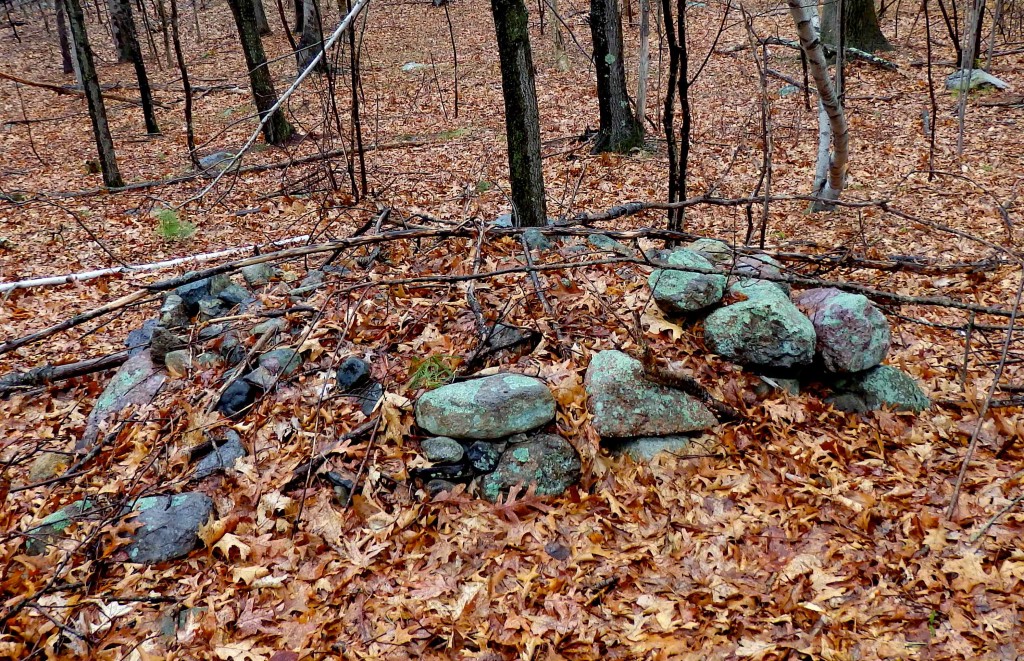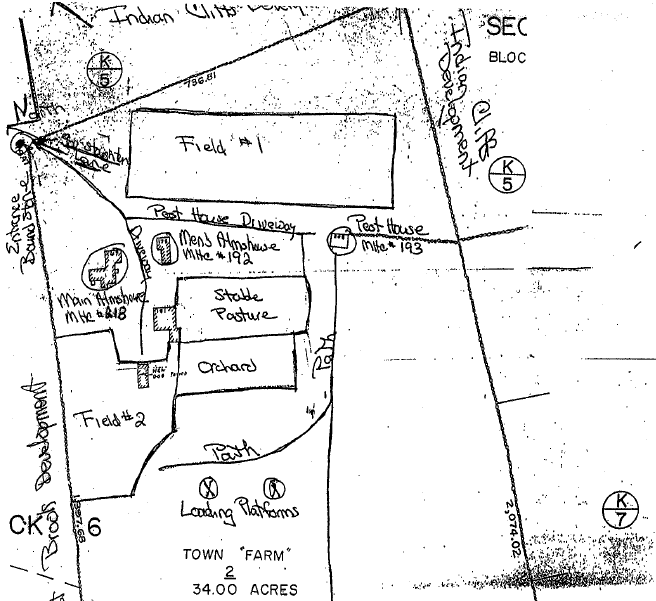by Frank Schroth
The answer to that question could put any development of the old town farm on hold. The property, which was left in trust to benefit the poor of Milton, is under agreement with Pulte Homes. Pulte has agreed to pay $5,000,000 for 30 acres of the land (the entire lot is 34 acres) and will construct a cluster development of market rate homes on the site. The proceeds of the sale will go into a fund to benefit financially stressed Milton residents. However, if the lot is proven to be a Native American burial site that development may not be allowed and the sale could fall through.
At a recent meeting of the Board of Selectmen, Gene Irwin, a Town Meeting Member from Precinct 9, reviewed Milton’s Native American history, their relations with early Milton settlers, and their presence on town land, specifically the old town farm.
Mr. Irwin began by saying, “What I am going to tell you is very little known . . . that site [the town farm] is a national treasure and it should not be disturbed.” He continued to say he had met with the Historical Commission and believed, “I have their blessing to be here.”
Mr. Irwin then went on to summarize “a large topic in a few minutes.” He discussed the enslavement of the Indian Squanto and his return to America where he worked as a translator for the British and introduced Myles Standish to the Chickatawbut. Irwin estimates that there were around 50,000 Indians in the area around the year 1600. A couple of plagues, one ~1617 and one ~1628 had a devastating impact on the Indians. The second plague Irwin says “took the population down to, say, 20 – 60 of individuals”. On Oct 8 1636 Richard Collicott went to Chief Kitchamakin and bought Milton for 28 fathoms of wamponi and also agreed to give 40 acres to the Indians anywhere the chief thought best. The chief wanted land near the Neponset but that was taken by the settlers. Mr. Irwin surmised that the Indians who were down to 40-50 in population at that time were then settled in the area of Wigwam HIll or the area of the poor farm. Irwin noted that the 40 acres left by Governor Stoughton to benefit the poor was identical to size to 40 acres agreed upon with the Native Americans and that such a number is rare in real estate.
Irwin concluded that he believed the spot to be an Indian burial ground and that if more than two deceased indians were on site it was necessary to go to state historical commission and consult with local tribes. The boring that Pulte wants to do needs to be “stopped in its tracks” as it would disrupt an historic site that may have “more history than Plymouth Plantation.”
At their meeting on 5/1 as Trustees of the Governor Stoughton property the selectmen discussed a site walk of the property done on 4/26 at the request of the Historic Commission. The purpose of the walk was to inspect the buildings on the site. Keohane, who had not been present on the walk, asked about the Native American burial ground issue and said “it was incumbent [on us] to check on this.”
At this meeting Planning Director Bill Clark referenced the Panek Report. Roger Panek, an architect specializing in early American buildings, had assessed the buildings and written a report delivered in June of 1999 (see references below). It has been posted to the Planning Board web site and it includes an historic narrative of the town farm. The narrative, written by Edie Clifford of the Milton Historical Society, includes a map of the area identifying the mounds thought to be burial sites as loading platforms (see lower section of following illustration).
Here are a list of resources for those interested in reading about the history of the area:
References
- The History of Milton Mass 1640-1887 by Albert Kendall Teele
- A History of Milton Massachusetts by Edward Pierce Hamilton
- The Panek Architectural Report
- Chickatawbut, Who the Great Chief Was and His Role in Early Boston’s History – from the Boston Evening Transcript, July 12, 1890
Lastly here is some information regarding laws pertaining to Native American burial grounds.
There are two important federal acts that have an influence on historic properties and Native American graves. These are the National Historic Preservation Act of 1966, as amended 2000, and Native American Graves Protection and Repatriation Act of November 16, 1990 (PDF)
These acts can help determine whether a cemetery property can be shown to be part of a Native American grave site or if the integrity, significance, and history of an extant cemetery can qualify for the National Register of Historic Places through National Register Criteria.
Additionally, if federally assisted projects are likely to have an adverse effect on historical and archaeological resources of a burial ground or cemetery, appropriate federal review process must be initiated for compliance with sections of the National Historic Preservation Act of 1966.
Section 106 of the National Historic Preservation Act of 1966 states that any project to be funded with federal money must be reviewed to determine whether or not that project may produce an “adverse effect” on any cultural resource eligible for or listed on the National Register of Historic Places. Based on its assessment, PHMC issues recommendations as to how to proceed with a given project. (To understand “adverse effect,” see: “Protecting Historic Properties: A Citizen’s Guide to Section 106 Review,” prepared by the Advisory Council on Historic Preservation 2002, page 7. www.achp.gov/citizensguide.pdf)
The National Historic Preservation Act of 1966, as amended 2000 promotes a national policy to preserve historic properties, significant historic and prehistoric sites, buildings and objects that are either eligible or listed on the National Register of Historic Places. The Act gives some protection to cemeteries that are eligible for or listed on the National Register of Historic Places. This protection only applies when federal funds, permits, or licenses are involved. The National Historic Preservation Act requires federal agencies or their representatives to identify archaeological or historic properties that will affected by a federally funded, permitted or licensed project and to determine those properties eligibility for the National Register of Historic Places. If the properties are eligible, the federal agency must gauge the effect the project will have on the properties.
Massachuestts General Law c. 114 section 17
Section 17. A town shall not alienate or appropriate to any other use than that of a burial ground, any tract of land which has been for more than one hundred years used as a burial place; and no portion of such burial ground shall be taken for public use without special authority from the general court. “Burial place”, as referred to in this section, shall include unmarked burial grounds known or suspected to contain the remains of one or more American Indian.

